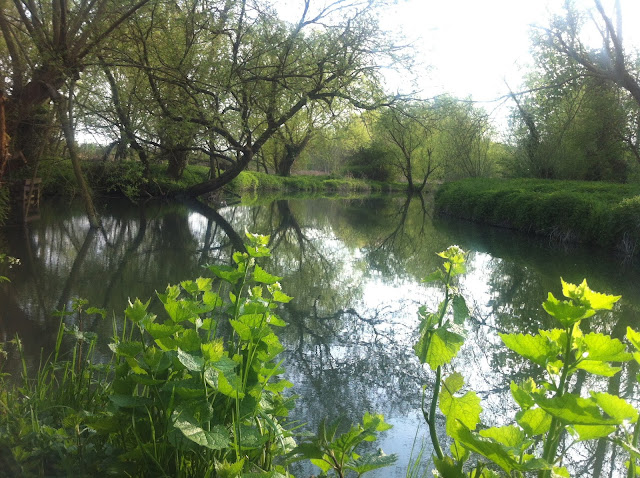Green Giants
 |
| Photo by Jo Sinclair |
It is said that in Hildersham, my home village in Cambridgeshire, a maypole was erected on top of a Roman burial mound in the field below the flint wall of the churchyard. The grassy tumescance ired a 19th century vicar so much he had it levelled. More recently I believe that tenants hired a rodenator to further undermine the dips and hillocks' offensive network of rabbit warrens; I saw the field marked out and heard an explosion so violent it was hard to believe it was legal.
Morris Men may still call, although the village pub has gone, but anyhow May Fest seems to be celebrated digitally (and in the most innocent way) in a tumbling cascade of joyous tweets and images. My Twitter timeline follows friends who celebrate every darling bud, nectar sip or fluttering wingbeat. We exchange information on where to find green hairstreak butterflies (thank you Rob).
We even get invited to go on nocturnal outings (more of that later). We sign petitions urging parliament to better protect our frail biodiversity. Some of us are fiercer and more heartfelt than others. Our modern-day legends and heroes are pixelated. But they roar. TV presenter David Attenborough turned 90 this month and Chris Packham released his memoir Fingers In The Sparklejar. His book shows how nature has been a comet throughout Packham's life, a lifeline of wonder and curiosity. Big TV personalities are helping spoon-feed public awareness of our natural world.
Of course, it's better to experience nature in real time, and in a more elemental way. I was invited to the launch of bat punting season 2016. Cambridge's own wildlife champion is the embullient Iain Webb who works for the local Wildlife Trust. In collaboration with punting company Scudamore's Iain has been flying the fascinating creatures in people's minds for six years now. That's three thousand punters learning about the significance of the Cambridge cowpat (a feast of flies), and the importance of the Cam river as a vital wildlife corridor. More a linear cathedral? Iain's facts are illuminations.
The cow parsley on Fen Causeway, Cambridge is one of my favourite images of the year. Guy Belcher, Biodiversity Officer of Cambridge City Council, says some of this plant will be thinned out in favour of greater biodiversity: a more varied menu for the bats perhaps? The area is being improved for the burgeoning water vole population too, and otters are never too far away. I was secretly hoping to see one of these on the bat safari as I'd found fresh traces of them upstream.
The relaxing splosh of Jame's punting pole was intermingled with the electro blips, smacks and kisses of the bat detectors the twelve passengers were issued with. Pipistrelles were doing Piccadilly Circus in the shelter of the trees. We passed a cacophony of clacking hissing caws: a heronry, Alice Hunter informed me. In the dusk moorhens and pheasants were silhouetted at roost in branches that grazed the boat. The impressive wingspan of daubenton bats could be glimpsed by torchlight as they skimmed the river surface.
The next day the media crowed that Sigourney Weaver had chosen to take a punt trip along the Cam, chauffeured by none other that our own James. I don't know if he told her any bat facts, but choosing a sunny glide along The Backs, it seems she missed out.
 |
| Image: Jo Sinclair |
Beautifully written stuff!
ReplyDeleteThanks for giving it a glance Chris!
ReplyDeleteGreat post, lovely photos.
ReplyDelete